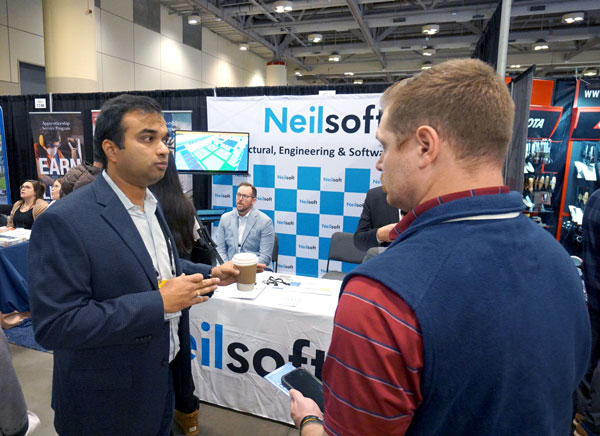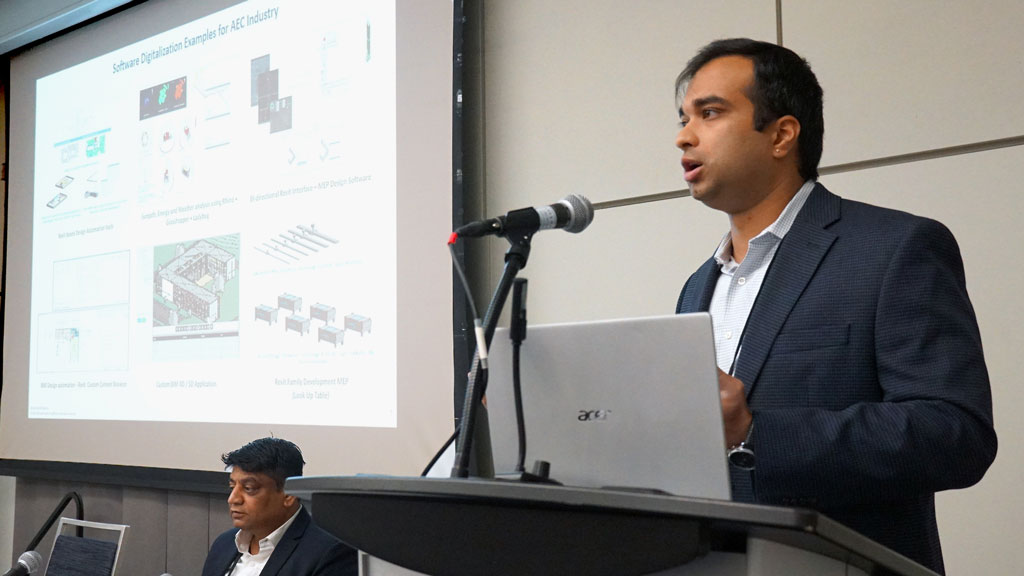Generative design — the merging of artificial intelligence and machine learning — could become an important tool for many in the AEC industry, improving building design options, speeding up the design process and cutting costs.
“Traditionally a designer will come up with two or three (design) options and ask the contractor and owner to choose one but now he has five or more options, which are more efficient,” Swaroop Mahatme, of Neilsoft Private Limited, told a packed seminar at the Buildings Show at the Metro Toronto Convention Centre recently.
Mahatme was speaking about Neilsoft’s generative artificial intelligence design (GAID) at a seminar titled the Benefits of Generative AI in Design.
He said GAID resolved design clashes and assessed issues with constructability during the pre-construction phase at a University of Toronto student housing complex.
Working with contractor Black & McDonald, Neilsoft, a global company, used GAID to catch that the utility services were designed without hangars and ran too close to the ceiling in the dormitory.
Making the change at the pre-design phase resulted in “a great deal of savings for them. It could have become a huge materials and labour cost,” Mahatme told the Daily Commercial News.
Another example where GAID has benefitted the design is through improving natural light options in a building design.

“Because of human bias, we make assumptions that tend to throw certain ideas aside. The machine won’t do that and gives options which work better for construction.”
Mahatme said what separates GAID from other products on the market is that Neilsoft inputs its own data to “train models” to be customized to each client. It has developed data for warehouses, health care and multi-family residential buildings.
Seminar panellist Pratap Sanap, Neilsoft’s head of research and innovation, told the audience GAID speeds proposed creation timelines for sales turnaround to one or two days. Normally timelines are two to three weeks.
“The machine learning part of it hardly takes more than a couple of hours and then it gives you good options.”
Those options for a project’s design can increase from two or so achieved through manual iterations to 10 or more with GAID, Sanap said.
He added work is done in 3D at the proposal stage (not 2D as in conventional designs) allowing for customized integration of scheduling and costing tools.
The system also helps meet compliance and mitigates risk because of accurate data. In conventional designs getting precise data can be challenging when geometries are complex, Sanap told the seminar audience.
Mahatme said Neilsoft customers in şÚÁĎłÔąĎÍř tend to be more cautious than some in markets such as the U.S. and Canadian architects “ask a lot of questions” about the technology’s benefits versus drawbacks before making any purchasing decisions.
When asked by a member of the audience at the seminar whether an error in human checks on an AI model could be learned by the machine and repeated leading a snowballing effect of design errors, Mahatme said multiple checks are key to prevention.
He added the software is customized for each project, eliminating mistakes from growing to other jobs.
Mahatme sees a bright future for generative AI in the building world in şÚÁĎłÔąĎÍř over the next five or so years.
Aside from helping developers cut time and costs, it can be an attractive model for cities such as Toronto and Vancouver as they face increased affordable housing challenges.
“This can help to build housing at a more rapid pace for less cost and with fewer construction challenges.”
Aside from technological hurdles, Mahatme said many building world professionals are not convinced that generative AI will make their lives easier.
“What you are used to doing for the last so many years is not always easy to move away from,” he said. “Change is always a challenge.”





Recent Comments
comments for this post are closed